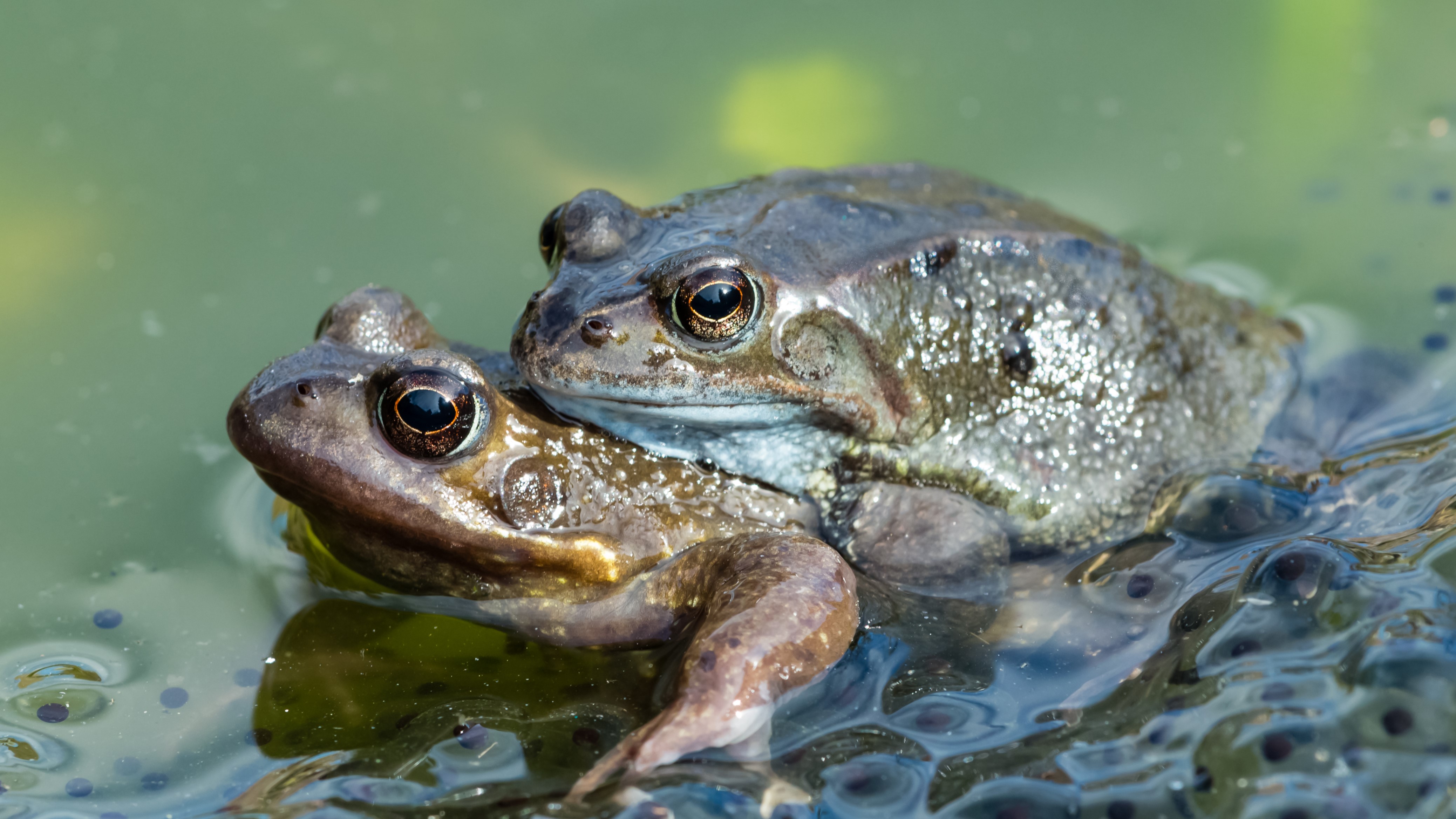These female frogs fake their own deaths to get out of sex
Female European common frogs will play dead to avoid mating during their "explosive" breeding, where several males attempt to mount one female at the same time.
In the video above, the female frog in the top left tank fakes death to avoid sex with the male.
Female frogs have developed a number of ways to get out of sex, including rolling, grunting and even faking their own deaths, scientists have discovered.
European common frogs (Rana temporaria) are known as "explosive" breeders that gather in their dozens to mate in ponds. Usually, males outnumber females, which means six or more males may compete to mount a female at one time in what is known as a mating ball.
"In some cases, the female might be killed inside these mating balls," Carolin Dittrich, a researcher at the Natural History Museum in Berlin, told Live Science.
But the females have developed several techniques to avoid mating. "Rather than being passive and helpless, we find that females can use three key strategies for avoiding males they don’t want to mate with — either because they aren't ready to breed or do not want to mate with a certain male," Dittrich said.
Related: Female spiders play dead during sex so males don't have to worry about being eaten
The researchers collected male and female European common frogs from a pond during the breeding season and divided them into tanks filled with water, so each tank contained two females and one male. They then filmed the frogs for an hour.
Get the world’s most fascinating discoveries delivered straight to your inbox.
Of the 54 females that were grasped by a male, 83% of them rolled onto their back in response.

"This puts the male underwater, so the male lets go to avoid drowning," Dittrich said.
The team also found that 48% of the females that were mounted by males emitted grunts and squeaks. The grunts mimicked "release calls" that male frogs usually make to ward off other males from mounting them, Dittrich said. "But it's unclear what the higher frequency squeaks are signaling," she added.
The researchers also found that a third of females lay motionless with their limbs outstretched for around two minutes after being mounted by a male.
"To us, it appears as if the female is playing dead, although we can't prove it's a conscious behavior," Dittrich said. "It could just be an automatic response to stress."
Smaller female frogs, which are usually younger, were the most likely to use all three deterrence strategies, whereas larger, likely older, females were less likely to fake their own death, Dittrich said. As a result, smaller female frogs were generally better at escaping a male's advances than larger ones, she added.
It could be that younger females, which have lived through fewer breeding seasons, become more stressed upon being mounted by males, causing them to respond more strongly, Dittrich said.
Overall, 46% of females who were mounted by a male successfully escaped.
Although the experiments are quite different to the real-world scenario, these strategies have been seen in the wild, Dittrich said.
Faking death as a strategy to escape unwanted males has been documented in just a handful of other animals, including dragonflies, spiders and in one other amphibian species — sharp-ribbed newts (Pleurodeles waltl).
Understanding mating behaviors like these could help support conservation efforts in the future, if we try to breed species back from the brink, Dittrich noted. "Although the European Common frog is more common than many other species, there has been a steady decrease in population numbers in the past 17 years due to the lack of rain and droughts," she said.
The study was published Wednesday (Oct. 11) in the journal Royal Society Open Science.

Carissa Wong is a freelance reporter who holds a PhD in cancer immunology from Cardiff University, in collaboration with the University of Bristol. She was formerly a staff writer at New Scientist magazine covering health, environment, technology, nature and ancient life, and has also written for MailOnline.


